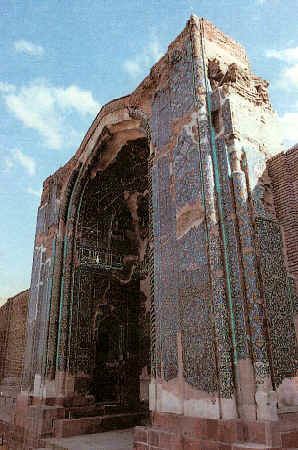Completed 1465 Province East Azerbaijan Province Architectural type Mosque Burials Jahan Shah | Opened 1465 Architect Reza Memaran Benam | |
 | ||
Similar Azerbaijan Museum, Arg of Tabriz, Constitution House of Tabriz, El‑Gölü, Saat Tower | ||
Tabriz iran el g l blue mosque saat tower ghari bridge
The Blue Mosque (Azerbaijani: Göy məscid; Persian: مسجد کبود - Masjed-e Kabūd) is a famous historic mosque in Tabriz, Iran. The mosque and some other public buildings were constructed in 1465 upon the order of Jahan Shah, the ruler of Kara Koyunlu.
Contents
The mosque was severely damaged in an earthquake in 1780, leaving only the iwan (entrance hall). Reconstruction began in 1973 by Reza Memaran Benam under the supervision of Iranian Ministry of Culture. However, it is still incomplete.
History
The Blue mosque of Tabriz was built upon the order of Jahan Shah the ruler of Kara Koyunlu dynasty which made Tabriz the capital of his Kingdom. His Kingdom covered major parts of modern Iran, Azerbaijan, and Turkey. He was killed by Uzun Hassan (the ruler of Ak Koyunlu) and buried on the only parts of the mosque that survived.
The mausoleum was built in the southern section of the mosque and is entirely covered with high marble slabs on which verses from Quran are engraved in Thuluth script on a background of fine arabesques. The roof of the mausoleum and the main dome chamber of the mosque collapsed during an earthquake in 1780. The mosque was rebuilt in 1973. Reconstruction is performed by plans and supervision of Mohammad Reza Memaran Benam, a traditional architect from Tabriz, with authority of the Iranian Organization of Cultural Heritages.
Calligraphy
The diverse Kufic, and Thuluth scripts, the arabesque patterns, and the choramatic compositions of these facades, were created by Nematollah-ben-Mohammad-ol-Bavab, the famous calligrapher. The walls inside and outside had been covered with mosaic tiles.
